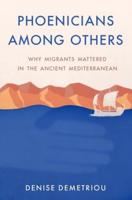Publisher's Synopsis
Historically, Ancient Arabia has been pictured as a vast, empty desert. Yet, for the last 40 years, by digging buried cities out of the sand, archaeological research has challenged this image. From the second half of the 1st millennium BC to the eve of Islam in East Arabia, and as early as the 8th century BC in South Arabia, the settlement process evolved into urban societies. This study aims at reviewing this process in South and East Arabia, highlighting the environmental constraints, the geographical disparities and the responses of the human communities to ensure their subsistence and to provide for their needs. Evolution was endogenous, far from the main corridors of migrations and invasions. Influences from the periphery did not cause any prominent change in the remarkably stable communities of inner Arabia in antiquity. The settlement process and the way of life was primarily dictated by access to water sources and to the elaboration of ever-spreading irrigation systems. Beyond common traits, two models characterise the ancient settlement pattern on the arid margins of eastern and southern Arabia. In South Arabia, the settlement model for the lowland valleys and highland plateaus results from a long-term evolution of communities whose territorial roots go back to the Bronze Age. It grew out of major communal works to harness water. Into a territory of irrigated farmland, the south-Arabian town appeared as a central place. Settlements constituted networks spread across the valleys and the plateaus. Each network was dominated by a main town, the centre of a sedentary tribe, the capital of a kingdom. In East Arabia, the settlement pattern followed a different model which emerged in the last centuries BC along the routes crossing the empty spaces of the steppe, in a nomadic environment. Each community spread over no more than one, two or three settlements. These settlements never grew very large and the region was not urbanised to the same degree as in the southwest of the Arabian Peninsula. Permanent settlements were places for exchanges and meetings, for craft productions, for worship, where the political elites resided, where the wealth from long-distance trading was gathered, and where surplus from the regional economy was held. Each town was isolated, like an island in an empty space.










